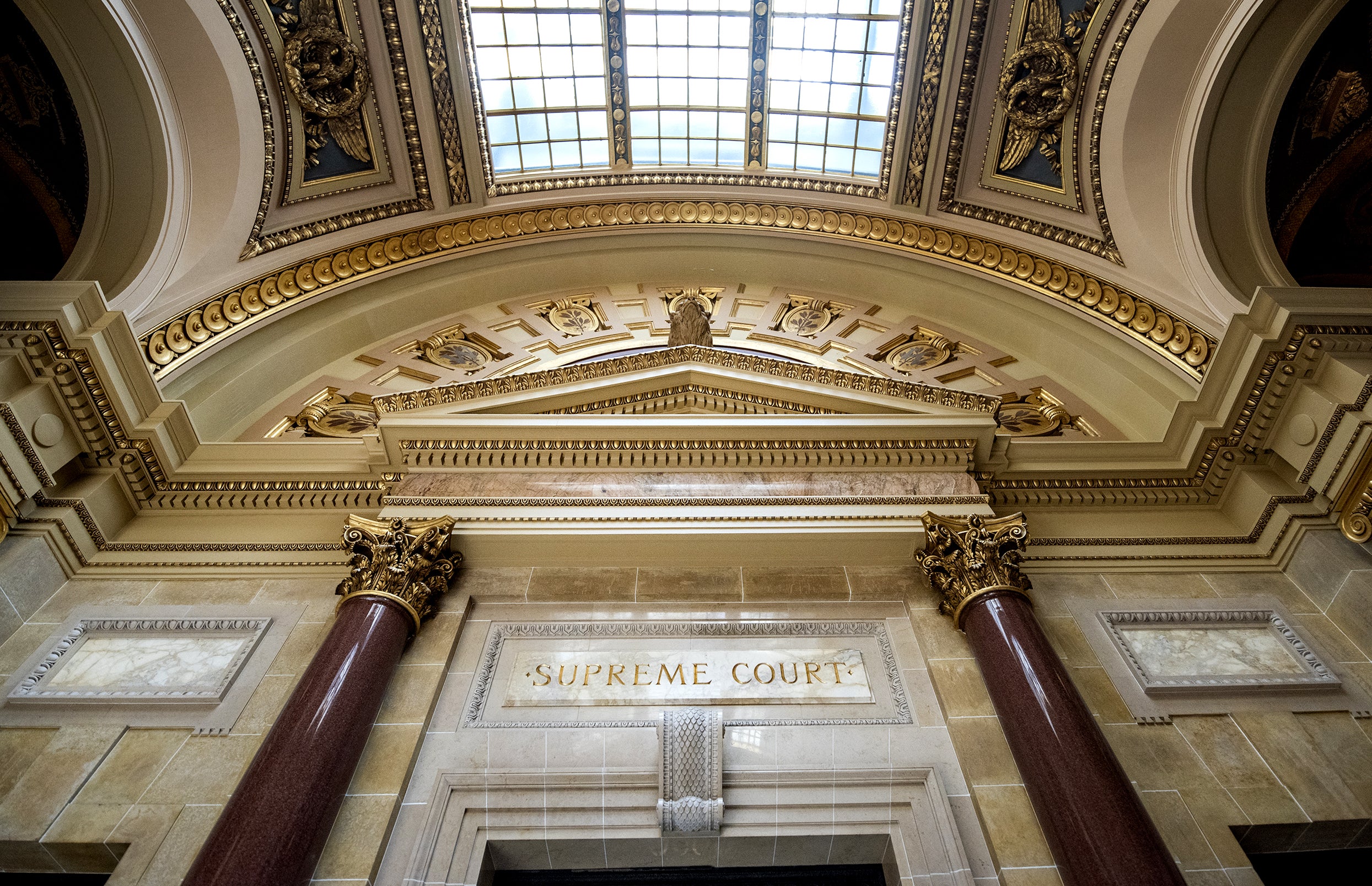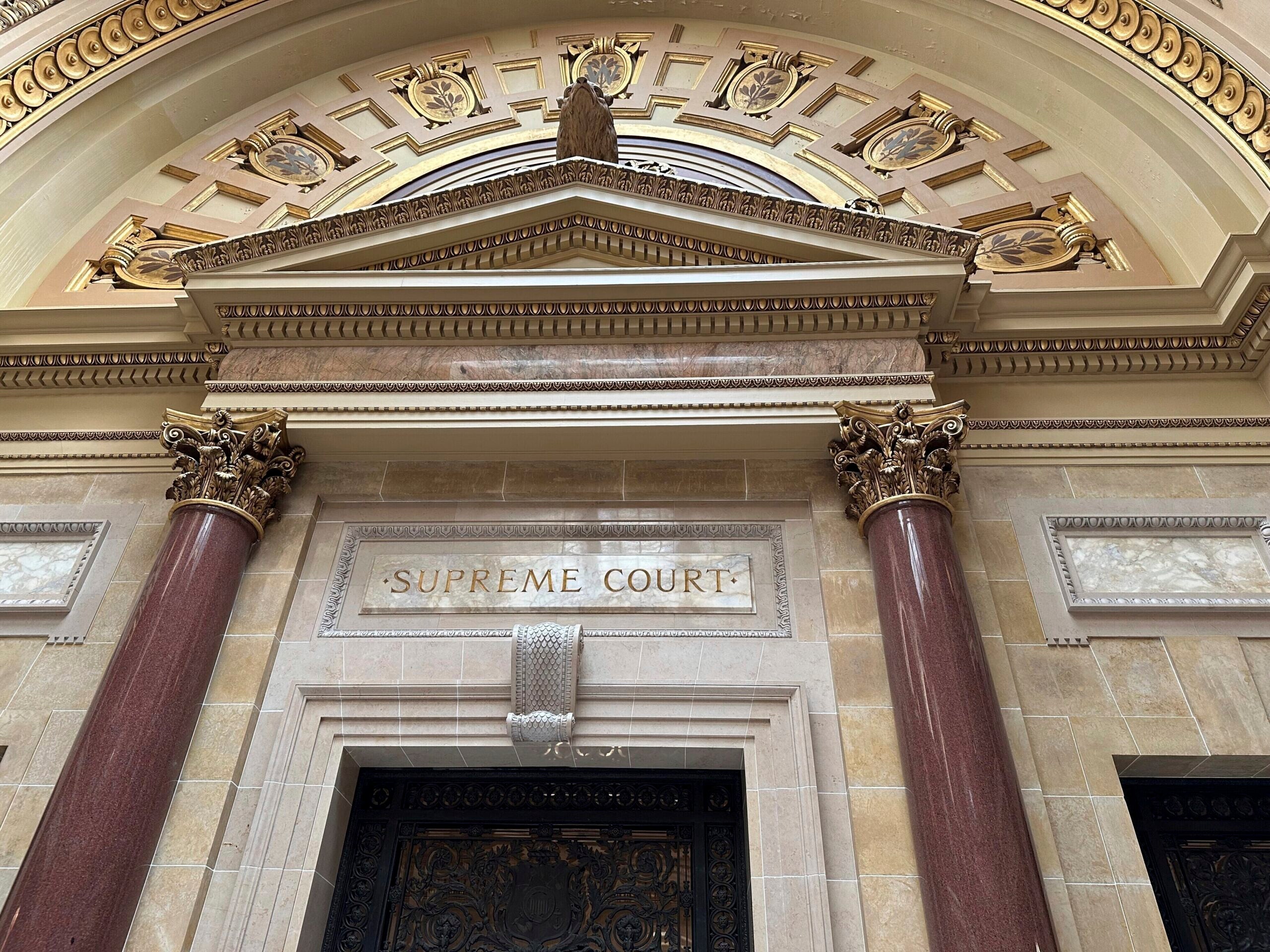When people look back at Wisconsin’s redistricting cycle of 2021, they might wonder how the Republican-led Legislature came out on top again, despite repeated and significant setbacks.
After all, the prevailing wisdom headed into this cycle was that with divided control of state government, compromise would be needed to win the day. Unlike 2011, Republicans couldn’t just draw the map they wanted.
In the early going, it seemed like that theory would hold. When Republicans passed a legislative map that had an even stronger GOP advantage than the last one, Democratic Gov. Tony Evers promptly vetoed the plan.
And when the Legislature resubmitted that same map to the Wisconsin Supreme Court, a 4-3 majority of justices — initially — rejected it.
But after months of legal haggling Republican lawmakers got the exact legislative map they wanted all along.
How?
It involved an unwavering strategy from GOP leaders from the very beginning, a rare order from the U.S. Supreme Court and an eventual change of heart from the key justice on the Wisconsin Supreme Court.
The most least
The idea that there would be some GOP advantage to the final legislative map was pretty well established by the time the state Supreme Court heard oral arguments in Wisconsin’s redistricting case.
In November, the court released an order explaining that they would pick a map that made the “least changes” to the existing map drawn in 2011.
The court met for several hours on Jan. 19, and while the parties covered a lot of ground, the topic of “least changes” came up repeatedly.
Lawyer after lawyer told justices their map was the — most — least.
They included Anthony Russomano, an assistant attorney general for the Wisconsin Department of Justice representing Gov. Evers.
“The governor’s maps make the least changes to the existing no matter how you slice it,” he said.
Russomano wasn’t talking about the map Evers endorsed as part of his “People’s Maps Commission.” That map failed in the Legislature and Evers pretty much abandoned it and drew a new map in its place, one that was clearly designed to meet the court’s “least change” mandate.
By the numbers, Evers’ new map moved the fewest people from one district to another. In redistricting-speak, its “core retention” score was the best.
“That was the measure the parties were instructed to meet,” Russomano said.
One party to the redistricting case decided not to draw new maps specifically to please the court: the Legislature. Instead, GOP leaders and their lawyers submitted the plan the Legislature passed in November — the one Evers vetoed. Its “core retention” score in the Assembly map was worse than Evers’.
Justice Rebecca Dallet, one of the court’s liberals, challenged the Legislature’s attorney, Taylor Meehan, to explain why the court should pick that map.
“You want us to basically say, because you’re the Legislature, we should pick what you gave us,” Dallet said.
“No, your honor,” Meehan responded. “The Legislature’s plan optimizes population equality. It optimizes municipal splits. And it optimizes least changes.”
“It doesn’t optimize least change,” Dallet interrupted. “You have to admit you’re not the least.”
“No, your honor,” Meehan said. “We fundamentally disagree with that.”
Meehan said measuring “least changes” wasn’t as simple as looking only at core retention. She said the court needed to look at the big picture, including other metrics like population equality, where the Legislature’s map scored best.
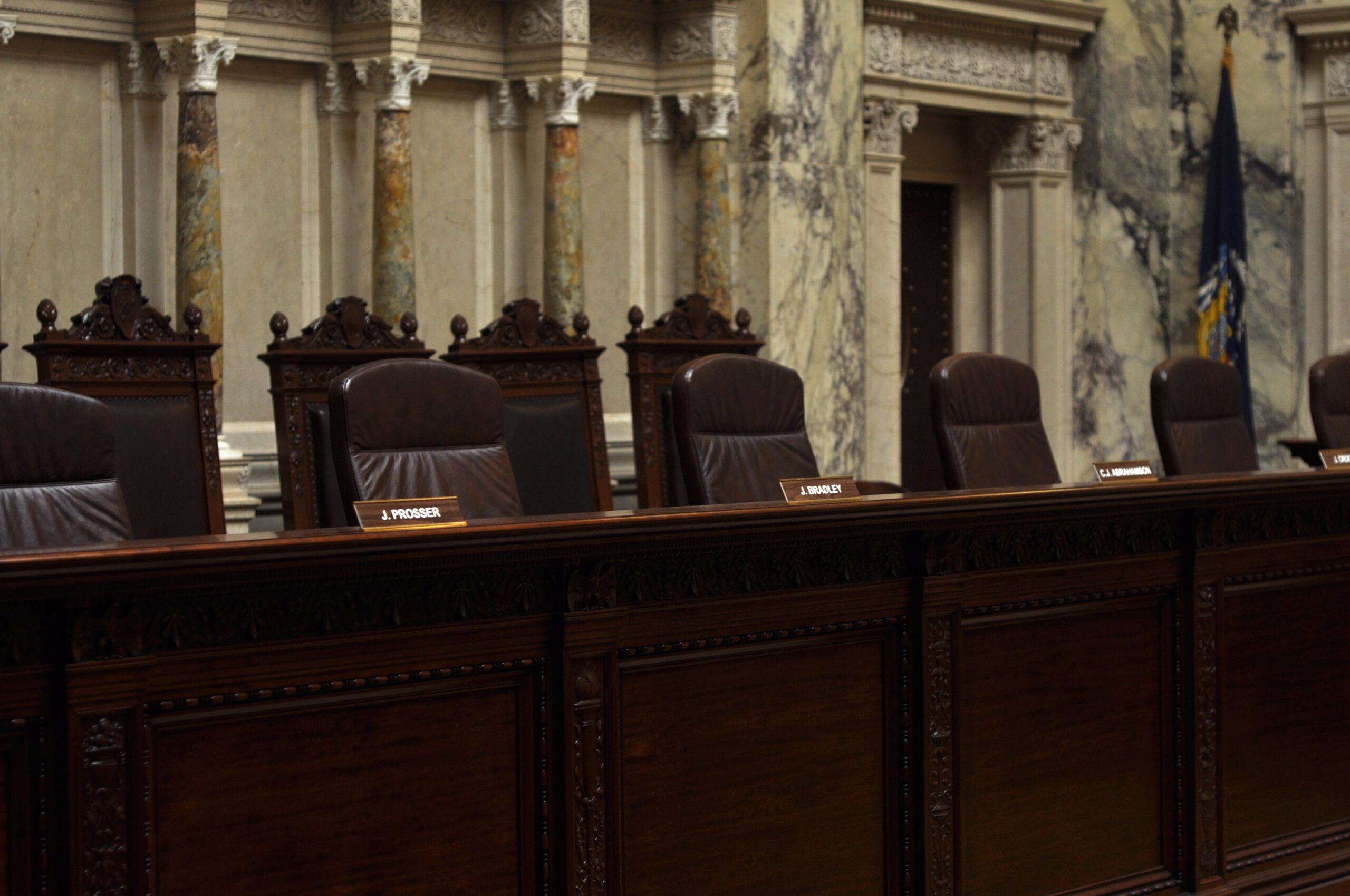
But there were signs that the key justice in this case, conservative swing Justice Brian Hagedorn, wasn’t buying that argument.
“I’m having a hard time understanding why we would now use that standard when that isn’t what we told the parties,” Hagedorn said. “If we told the parties we wanted you to submit maps that have perfect quality population … we should have said so. But we didn’t say so. We said something quite different. I don’t want to be Charlie Brown and Lucy here.”
Hagedorn was referencing a recurring story in the Peanuts cartoons, where the character Lucy tells Charlie Brown that she’ll hold a football and let him run and kick it. Each time, at the last minute, Lucy pulls the football away, sending Charlie Brown flying. The rules were changed.
Other conservative justices have no problems with the Legislature’s argument, but on this court of seven, Hagedorn’s opinion matters the most. When it comes to political cases, the other three conservatives reliably stick together, and so do the court’s three liberals. Hagedorn is the only justice who’s unpredictable.
On March 3, Hagedorn did indeed write the majority opinion in Wisconsin’s redistricting case, joined by the court’s three liberal justices in choosing the governor’s maps. In this game of least changes, Evers had won.
Hagedorn’s opinion was straightforward, explaining that the governor’s map moved the fewest number of people into new districts. He said the other parties to the case didn’t offer any other measures of least change that were better than the governor’s. He wrote the governor’s Assembly map was “vastly superior.”
The other three conservative justices dissented from Hagedorn, writing opinions that took him to task.
Chief Justice Annette Ziegler called Hagedorn’s opinion “an exercise of judicial activism.”
Justice Rebecca Bradley, who once campaigned for Hagedorn, was also critical.
“Justice Hagedorn may have cast the deciding vote in this case, but he does not have the power to act as a supreme court of one,” she wrote.
Justice Patience Roggensack took it a step further, writing that she hoped the U.S. Supreme Court would be asked to review the case. This is practically unheard of, as the state Supreme Court is typically the court of last resort in the state.
The very next day, a lawyer for Republicans announced they would appeal to the U.S. Supreme Court.
From one court to another
At this point in time in early March, it was unclear if the U.S. Supreme Court would take the case at all. But the court was paying attention to Wisconsin.
About three weeks after Hagedorn chose the governor’s maps, the court stepped in and reversed the decision. Evers’ victory was short-lived.
In a 7-2 unsigned opinion, justices struck down Evers’ legislative redistricting plan based on concerns related to the federal Voting Rights Act.
“I think the Hagedorn opinion needed to spell out the circumstances that justified the use of race,” said Atiba Ellis, a Marquette University Law School professor and an expert on the Voting Rights Act. “And that failure to connect the dots, I think, made for an easy target for the U.S. Supreme Court to say, ‘Hey, this was done incorrectly.’”
The Voting Rights Act looms large in redistricting cases. It’s based on decades of case law, which is not always clearly defined. What one party says is good for minority voters, another party might say is racist.
Court decisions based on the VRA can be complex, with a series of questions that map drawers have to answer before they draw district lines based on race.
And it’s not just semantics — there’s a reason this law exists in the first place.
“To understand that story, we first have to understand the kind of nature of the racial apartheid that the VRA was designed to fix,” Ellis said.
Ellis said that story begins with post-Civil War Reconstruction, an era he views as the root of many of today’s political challenges. Freed slaves were given rights, but they were incomplete, and new laws were passed that took Black peoples’ rights away. The Voting Rights Act of 1965 was passed as a response to this — an effort to right the country’s wrongs.
“The idea is that the Voting Rights Act allows for minority citizens to fully enjoy participation in the political process,” he said.
When it comes to redistricting, the VRA can be used as a justification for drawing “majority-minority” districts to ensure minority voters get to elect who they want.
It can also be used to overturn maps after they’re drawn. If minority voters think they’ve been packed or cracked by a redistricting plan, they can sue. Courts can and do redraw maps based on these claims.
But the U.S. Supreme Court has urged caution about when to use the VRA. Giving race too much weight, the court has said, might violate the U.S. Constitution’s guarantee of equal protection, the 14th Amendment.
This is where the U.S. Supreme Court says the Wisconsin Supreme Court got it wrong. The governor’s map — the one Brian Hagedorn picked — created an additional majority-minority district in Milwaukee.
Hagedorn wrote that there were “good reasons to believe” that the district was needed, but his opinion didn’t say much about why. Ellis said that was the weakness of Hagedorn’s ruling.
“What the U.S. Supreme Court basically argued was, ‘Look, you didn’t walk through these factors in sufficient detail for us to determine whether there was a violation.’”
Ellis said the court essentially ruled that Hagedorn needed to show his work, sending the legislative maps back to Wisconsin.
In a separate order, the U.S. Supreme Court rejected a Republican appeal of Evers’ congressional maps, meaning that plan would survive.
Racially neutral
At this point on March 23, there was still a chance the governor’s plan could prevail. Evers’ lawyers got to work, telling the state Supreme Court they could resubmit their map and show their work this time. Or, they could submit a similar map and just adjust the Milwaukee districts.
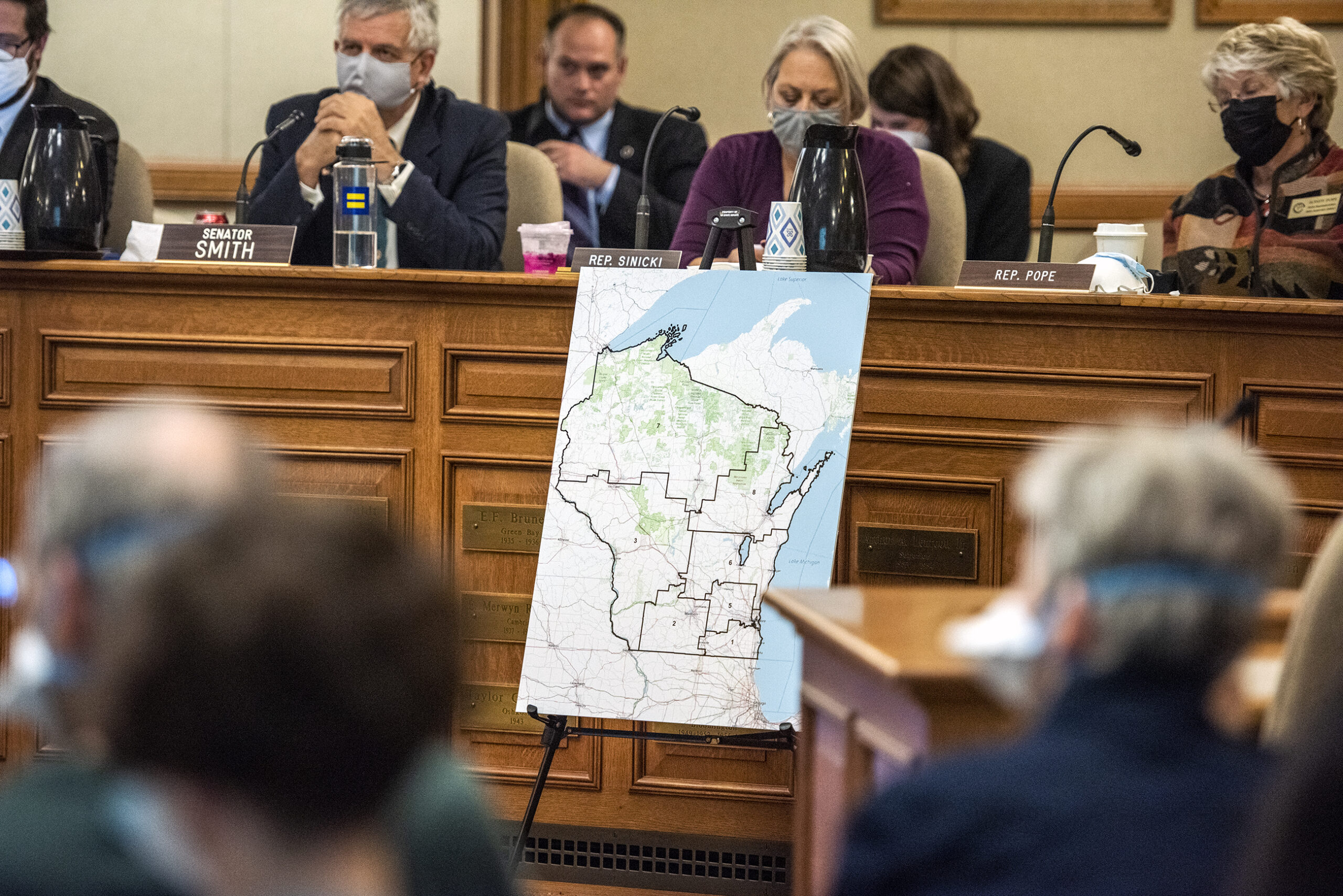
Lawyers for the Legislature disputed this, telling the court in a terse letter that the governor shouldn’t get another chance. The only answer to this problem, they said, is a map that is race-neutral — one that doesn’t consider race at all.
Republican legislators had been laying the groundwork for this moment, choosing their words carefully ever since they introduced their map.
At the public hearing on the Legislature’s map, only two people testified in favor: Republican Assembly Speaker Robin Vos and Republican Senate Majority Leader Devin LeMahieu. They both stressed a key point about how the maps were drawn.
“These employees were instructed not to consider race when drafting the legislative maps,” Vos said.
“The new maps are drafted without the use of race data at any point in the process to ensure compliance with the 14th Amendment,” LeMahieu said.
While the comments were likely made with courts in mind, Marquette Law’s Ellis sees a troubling trend if winning Voting Rights Act cases means not considering race at all.
“The Voting Rights Act, in and of itself, is about being race conscious,” Ellis said.
For Ellis, the worst case scenario would be if courts put so much emphasis on race neutrality that the Voting Rights Act itself is declared unconstitutional, and its protections for minority voters go away.
‘The remaining option’
In the short term, the race-neutral argument persuaded the state Supreme Court. On April 15, the day candidates for the Legislature were scheduled to begin circulating nominating petitions to run in the new districts, the court issued a final decision.
Four justices picked the Legislature’s map. Brian Hagedorn was one of them.
Hagedorn didn’t write the majority opinion in this ruling. Instead, he penned a four-page concurrence. He said he didn’t think the court’s earlier order choosing the governor’s maps was based on a Voting Rights Act argument, but conceded that the U.S. Supreme Court viewed it differently. With time running out, Hagedorn said the Legislature’s map was “the remaining option.”
Rob Yablon, University of Wisconsin-Madison law professor and redistricting expert, disputes that.
“Even at that late stage, I do think it’s an exaggeration to say that there weren’t any other options that were available,” he said.
Yablon said the state Supreme Court could have taken more evidence or reconfigured the Milwaukee districts. They also could have drawn a whole new map. These are things courts do, Yablon said.
But instead, the state Supreme Court adopted the Legislature’s map wholesale, without changes. This was the same map the governor vetoed and the court itself rejected the first time.
After the opinion came out, Yablon analyzed how the final Wisconsin map compared to other court-drawn maps across the country over the past 20 years. He compared them based on several metrics that measure partisanship, including their “partisan bias” and their “efficiency gap.” He said the maps endorsed by the Wisconsin Supreme Court are in “a league of their own.”
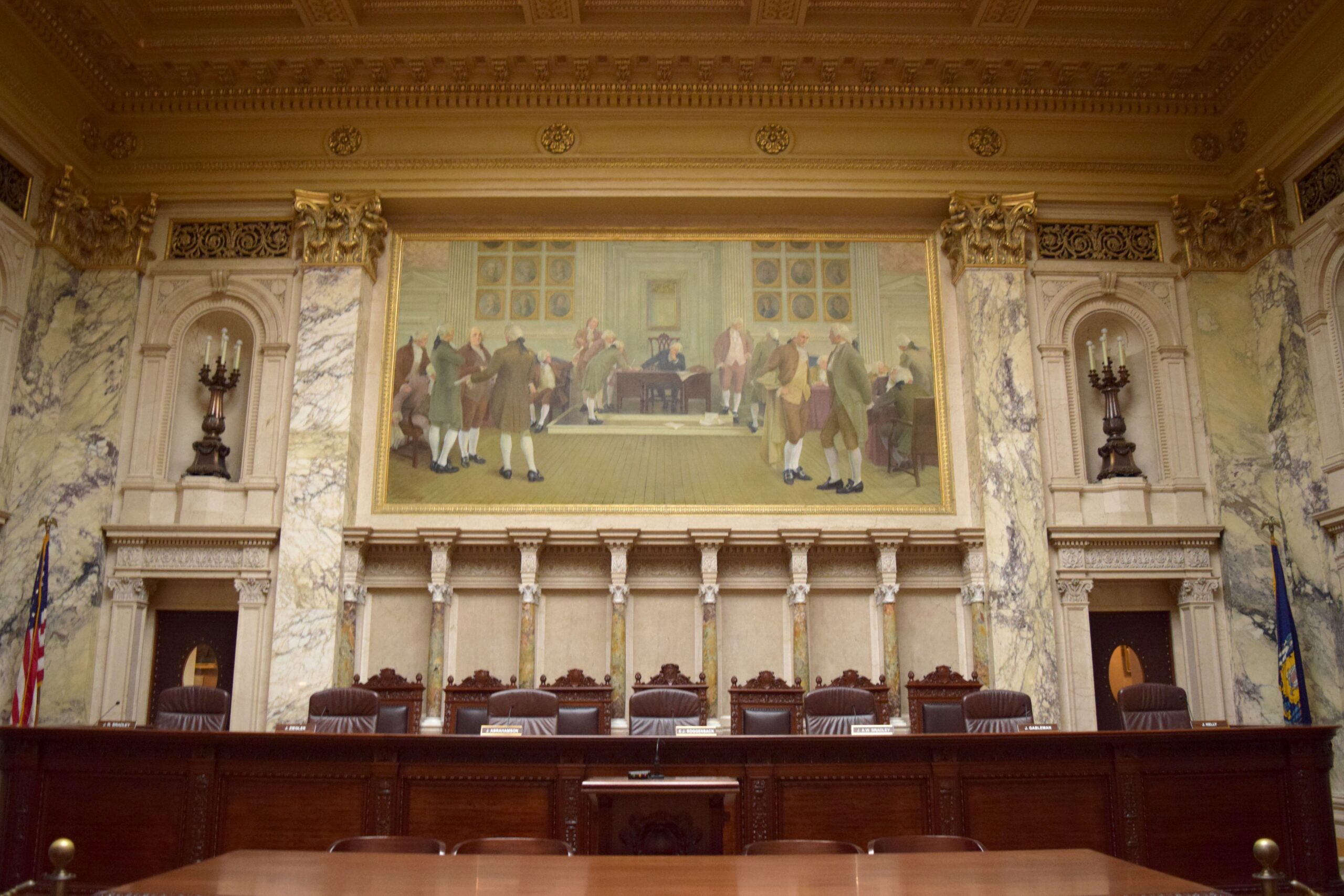
“These maps really stand out as being maps that look exactly like a very strong partisan gerrymander, the kind that you would expect from a legislature which was trying to tilt the playing field in its favor,” Yablon said. “And of course, that’s what this Legislature was trying to do. They were trying to reinforce and perpetuate the gerrymander that they had adopted a decade ago. And ultimately they got the Wisconsin Supreme Court to sign off on that.”
That all assumes that this map is the final, final map — that this 2021 “least changes” version of the 2011 map will live on through this decade and beyond.
And it might.
But a future court could view the matter differently. Wisconsin’s Supreme Court justices are elected to 10-year terms, meaning the court’s 4-3 ideological balance could shift with a single election. Conservative Justice Patience Roggensack’s term is up in 2023.
“And if that court swings after an election, including an election in 2023, I think there’s good reason to think that they will take another look at this map,” Yablon said.
There’s also a good chance that Democrats, or their allies, could sue to change the map in federal court, possibly on the grounds that it violates the Voting Rights Act. But that likely won’t happen before the 2022 elections.
No competition
For the 2022 elections, Wisconsin’s Republican-drawn “least changes” map is without a doubt the law of the land.
However, it’s not just a carbon copy of the old map. Lines did move. Districts changed. And the end result is a map that’s both strongly Republican and distinctly uncompetitive.
Out of 99 Assembly districts, only three are projected to be within 2 percentage points. Only three. The rest have been basically decided before a single vote is cast.
To be sure, there wasn’t much competition under the 2011 map, but in some places, as the decade progressed, competition started to bloom. The population changed, people moved, attitudes changed, and seats that were drawn to be safe were suddenly up for grabs.
This new map shut that down, and it’s super apparent in one part of the Milwaukee suburbs.
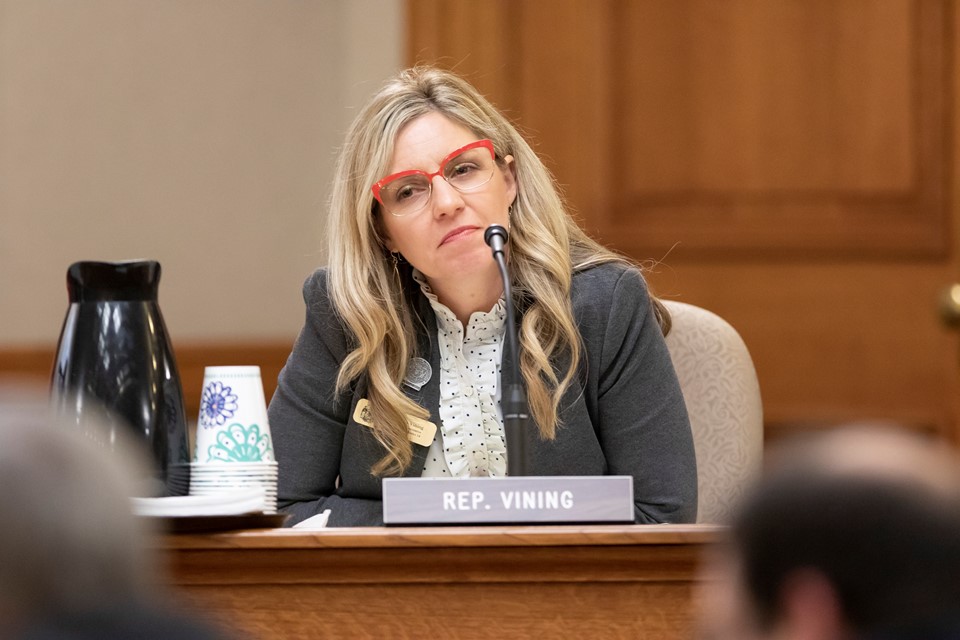
Democratic State Rep. Robyn Vining’s Assembly district includes parts of Milwaukee and Waukesha Counties. Historically, Waukesha has been hugely important to Wisconsin Republicans, the base of their power.
Vining’s district used to be a part of that. For example, in 2014, Democrats didn’t even field a candidate here. It was considered safely GOP. But over the past decade, Milwaukee’s suburbs have changed.
“We had started to notice a crack in the gerrymander,” Vining said.
In 2018, Vining saw a growing block of Democratic voters in the district, particularly in her home of Wauwatosa. She thought if she could mobilize those voters, she could win the whole district.
“We looked at the math, and we saw that it was in striking distance,” she said.
On Nov. 6, 2018, Vining did something that no other Democrat had done before her under the 2011 map. She flipped a district from red to blue, winning by just 138 votes.
“I mean, it felt great,” Vining said. “We wanted representation. We got it.”
Initially, it seemed like Republican leaders viewed Vining’s victory as a fluke, not indicative of any pattern. Assembly Speaker Robin Vos told Republicans at the state GOP convention in 2019 that Vining’s win would be short-lived.
“We lost one seat last time to a woman who’s going to be a one-termer,” Vos said. “I’m not even going to tell you her name because she’s going to lose.”
But, it wasn’t a fluke. In 2020, Vining won by 8 percentage points. Given what people had assumed about the district, it felt like a landslide.
And in the 2021 round of redistricting, Republicans in the Legislature addressed Vining’s changing district by, effectively, giving to her.

Under the new map, Vining’s district becomes a safely Democratic seat. President Joe Biden would have won it by 23 percentage points according to an analysis by Marquette University’s John Johnson.
Why would Republicans concede to Vining, handing Democrats a seat the GOP held for years? The districts next to Vining’s answer that question.
They include one held by Democratic state Rep. Sara Rodriguez, who first ran for the Legislature in 2020 against a Republican incumbent.
“It was drawn to be a Republican district,” Rodriguez said. “But as the 10 years have gone on, that district had changed.”
Like Vining, Rodriguez seemingly beat the odds. She flipped the district, winning by just 735 votes.
But unlike Vining, Republicans conceded nothing to Rodriguez in the new map.
“They carved out my district pretty dramatically,” Rodriguez said. “Because they wanted to make it more red.”
While Rodriguez’s district currently includes a significant number of Milwaukee County wards, her new district is almost exclusively Waukesha County. By the numbers, it would be tougher for a Democrat to win there.
Rodriguez isn’t seeking reelection to the Legislature. Instead, she’s running for lieutenant governor, a decision she said she made before the new map was introduced.
But by making these changes in the map, Republicans scored a two-for-one deal. By packing Democratic voters into Vining’s district, Republicans could afford to make Rodriguez’s district more red. They did the same thing with an adjacent GOP district, currently held by outgoing state Rep. Joe Sanfelippo, that was becoming more competitive.
And by doing all of that, they protected a Republican Senate seat that was trending Democratic, the district currently held by state Sen. Dale Kooyenga, of Brookfield.
These were strategic changes, made by Republican mapmakers, to further cement a majority they first won in 2011. They pursued the map they wanted through a governor’s veto and an early loss in the Wisconsin Supreme Court. In terms of politics, the prize they ended with is everything.
This story is part of “WPR Reports: Mapped Out,” a podcast about redistricting in Wisconsin. Never miss an episode by subscribing now on your favorite podcast app or at wpr.org/mappedout.
Wisconsin Public Radio, © Copyright 2025, Board of Regents of the University of Wisconsin System and Wisconsin Educational Communications Board.

